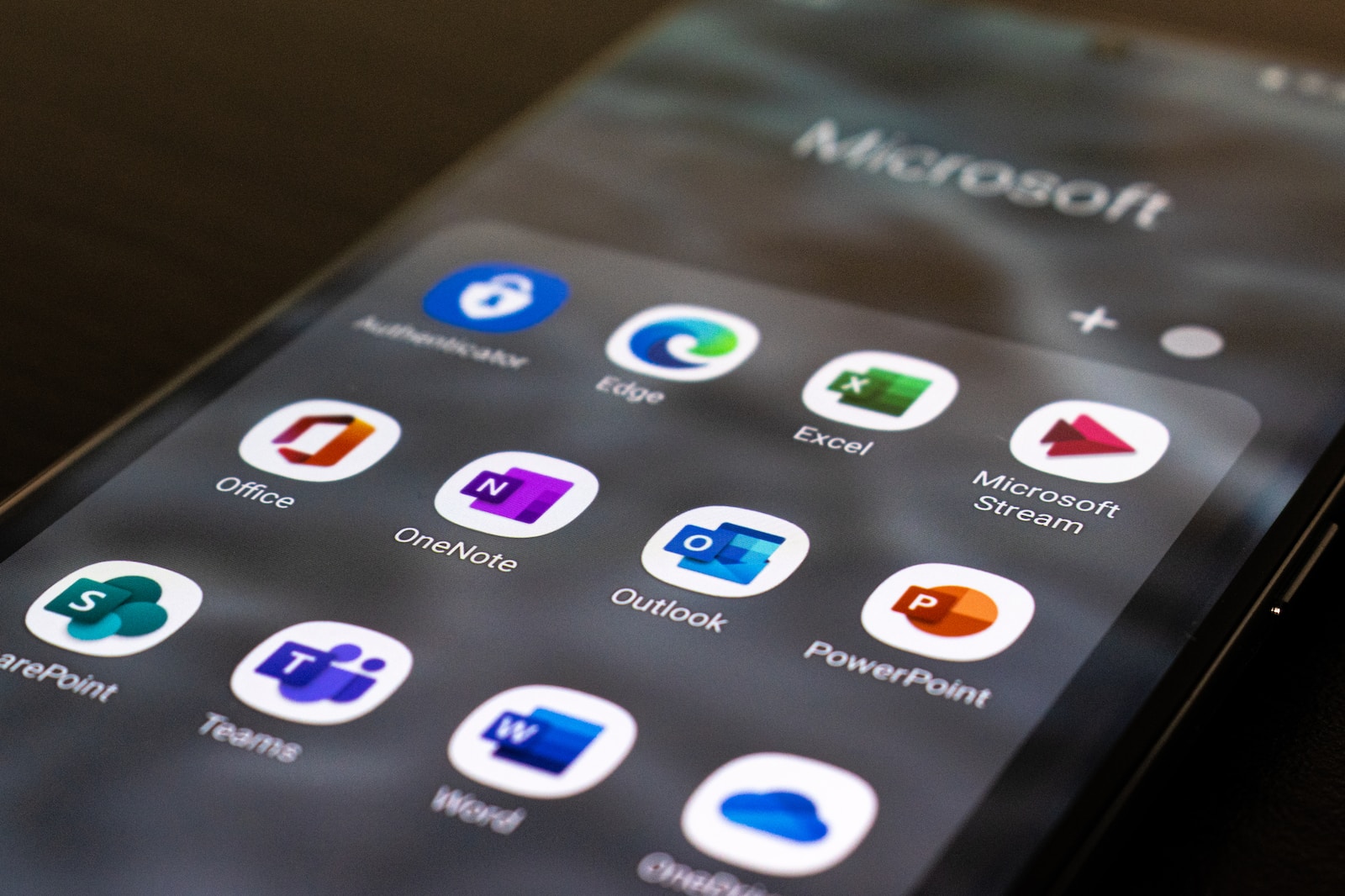Last Updated on: 21st November 2023, 08:37 pm
Microsoft Planner and Trello are two of the most popular project management tools available today. Both platforms offer a range of features and benefits, making it difficult to determine which one is the better option. In this article, we will compare Microsoft Planner and Trello, highlighting their respective pros and cons.
Microsoft Planner is a project management tool developed by Microsoft. It is designed to help teams organise and manage projects more efficiently. One of the key benefits of Planner is its integration with other Microsoft tools, such as Teams and Outlook. This makes it easier for teams to collaborate and communicate effectively.
Trello, on the other hand, is a web-based project management tool that uses a visual approach to project management. It is known for its simplicity and ease of use. Trello uses boards, lists, and cards to help teams organise and prioritise tasks. It also offers a range of integrations with other tools, such as Slack and Google Drive, to enhance collaboration and communication.
Overview
What is Microsoft Planner?
Microsoft Planner is a web-based project management software that is designed to help teams collaborate more effectively. It is a part of the Microsoft Office 365 suite of tools and allows users to create and manage tasks, assign them to team members, and track progress in real-time. The tool is based on the Kanban-style approach to project management, which allows users to visualize their tasks on a board and move them from one stage to another as they progress.
What is Trello?
Trello is another web-based project management tool that is designed to help teams collaborate more effectively. It is also based on the Kanban-style approach to project management and allows users to create and manage tasks, assign them to team members, and track progress in real-time. Trello is known for its simplicity and ease of use, making it a popular choice for small teams and startups.
Differences between Microsoft Planner and Trello
There are several differences between Microsoft Planner and Trello. One of the main differences is the level of customization options available. Microsoft Planner offers a wide range of customization options, including custom fields and integration with other apps, while Trello is more limited in this regard.
Another difference is the level of usability. While Trello is known for its simplicity and ease of use, Microsoft Planner can be more complex and difficult to navigate. However, this complexity can be beneficial for larger teams and more complex projects.
In terms of team collaboration, both tools are designed to facilitate collaboration and communication between team members. However, Microsoft Planner offers more robust communication features, such as the ability to attach files and chat directly within the tool.
Overall, both Microsoft Planner and Trello are effective tools for team collaboration and project management. The choice between the two will depend on the specific needs of the team and the complexity of the project.
Features
Microsoft Planner Features
Microsoft Planner is a task management tool that allows users to create and manage tasks, assign them to team members, and track their progress. Some of the key features of Microsoft Planner include:
- Kanban Board: Microsoft Planner is based on the Kanban methodology, which means that tasks are represented as cards on a board. This makes it easy to visualize the progress of tasks and move them between different stages of completion.
- Task Assignments: Users can assign tasks to team members and set due dates to ensure that everyone is on the same page.
- Comments: Users can leave comments on tasks to provide additional information or ask questions.
- Attachments: Users can attach files to tasks to provide additional context or share relevant documents.
- Calendar View: Microsoft Planner has a calendar view that allows users to see all their tasks in a calendar format, making it easy to plan their schedule.
Trello Features
Trello is another popular task management tool that is based on the Kanban methodology. Some of the key features of Trello include:
- Kanban Board: Trello also uses a Kanban board to represent tasks as cards and move them between different stages of completion.
- Custom Dashboards: Users can create custom dashboards to organize their tasks in a way that makes sense to them.
- Time Tracking: Trello has a time tracking feature that allows users to track the time spent on each task.
- Gantt Charts: Trello has a power-up that allows users to create Gantt charts to visualize the progress of their tasks.
Comparing Features
When it comes to features, both Microsoft Planner and Trello offer similar functionality. Both tools use a Kanban board to represent tasks, allow users to assign tasks to team members, and offer the ability to leave comments and attach files to tasks. However, Trello offers some additional features such as custom dashboards and time tracking, while Microsoft Planner has a calendar view and the ability to create plans that can be shared with others.
In terms of support, both Microsoft Planner and Trello offer online documentation and support forums. Microsoft Planner is included as part of Office 365, which means that users can also access support through Microsoft’s customer support channels. Trello offers a paid support plan for users who need additional assistance.
When it comes to size limits, Microsoft Planner has a limit of 250 tasks per plan, while Trello does not have a specific limit on the number of tasks that can be created. Both tools offer integrations with other apps and services, such as Microsoft Teams and Slack.
Overall, both Microsoft Planner and Trello offer a robust set of features for managing tasks and projects. The choice between the two will depend on the specific needs of the user and their team.
Project Management
Project Management with Microsoft Planner
Microsoft Planner is a great tool for project management, especially for those who are already using Microsoft Office. It allows users to create projects, assign tasks, set due dates, and track progress. With Microsoft Planner, users can also collaborate with team members by sharing files, notes, and comments.
One of the best features of Microsoft Planner is the built-in calendar. Users can easily see their tasks and deadlines on the calendar, making it easier to plan their work. Additionally, Microsoft Planner sends notifications to users when tasks are due or when there are changes to the project.
Project Management with Trello
Trello is a popular project management tool that uses a visual board to organize tasks. Users can create boards for different projects and add cards for each task. Trello also allows users to set due dates, add comments, and attach files to cards.
Trello is great for team collaboration as it allows users to assign tasks to team members and track progress in real-time. Trello also has a mobile app that makes it easy to manage tasks on the go.
Comparing Project Management Features
When it comes to project management features, both Microsoft Planner and Trello have their strengths and weaknesses. Microsoft Planner has a more robust set of features, including the built-in calendar and notifications. Trello, on the other hand, has a more intuitive interface and is easier to use for those who are not familiar with Microsoft Office.
Overall, the choice between Microsoft Planner and Trello depends on the needs of the user and the project requirements. Those who are already using Microsoft Office may find Microsoft Planner to be the better option, while those who prefer a more visual approach to project management may prefer Trello.
Integration
Microsoft Planner Integration
Microsoft Planner integrates seamlessly with other Microsoft apps such as Teams, Outlook, and OneNote. This integration makes it easy for users to access their Planner tasks from within these apps and collaborate with team members. For example, a user can create a task in Microsoft Teams, and it will automatically appear in their Planner app. Additionally, users can access their Planner tasks from within their Outlook calendar, making it easy to schedule time to work on tasks.
Trello Integration
Trello also offers integration with various other apps, including Slack, Google Drive, and Dropbox. This integration allows users to attach files to their Trello cards directly from these apps. Trello also integrates with Zapier, which allows users to connect Trello with over 1,000 other apps.
Comparing Integration
When it comes to integration, Microsoft Planner has an advantage over Trello because of its integration with other Microsoft apps. This integration makes it easy for users who are already using Microsoft apps to incorporate Planner into their workflow seamlessly. However, Trello’s integration with Zapier allows users to connect with a wider range of apps, making it a more versatile option.
In summary, both Microsoft Planner and Trello offer integration with other apps, but the specific apps they integrate with differ. Microsoft Planner integrates seamlessly with other Microsoft apps, while Trello integrates with a broader range of apps through Zapier.
Pricing
When it comes to choosing between Microsoft Planner and Trello, pricing is an important factor to consider. Both tools offer different pricing plans, so it’s important to choose the one that best fits your budget and needs.
Microsoft Planner Pricing
Microsoft Planner is included in the Microsoft 365 suite of productivity tools, which offers a variety of pricing plans. The following are the pricing plans for Microsoft 365:
- Microsoft 365 Business Basic: £3.80 per user/month
- Microsoft 365 Business Standard: £9.40 per user/month
- Microsoft 365 Business Premium: £15.10 per user/month
All of these plans include Microsoft Planner, as well as other Microsoft 365 apps such as Word, Excel, PowerPoint, and Teams. The pricing plans are based on the number of users and the features included.
Trello Pricing
Trello offers a variety of pricing plans, including:
- Free: This plan is suitable for individuals or small teams who want to get started with Trello. It includes basic features such as unlimited boards, cards, and lists.
- Business Class: This plan is suitable for larger teams who need more advanced features such as team overviews, priority support, and custom backgrounds. It costs £8.33 per user/month when billed annually.
- Enterprise: This plan is suitable for large organizations who need advanced security features, dedicated account managers, and more. Pricing is available upon request.
Comparing Pricing
When comparing the pricing of Microsoft Planner and Trello, it’s important to consider the features included in each plan. While Microsoft Planner is included in the Microsoft 365 suite, which offers a variety of other apps, Trello offers a more focused set of features specifically designed for project management.
If you’re already using Microsoft 365 for other apps, then Microsoft Planner may be the more cost-effective option. However, if you’re looking for a dedicated project management tool with more advanced features, then Trello may be the better choice.
Ultimately, the decision of which tool to choose will depend on your specific needs and budget. It’s important to evaluate both tools carefully and choose the one that best fits your requirements.
Flexibility
Flexibility in Microsoft Planner
Microsoft Planner offers a high level of flexibility when it comes to organising tasks. Users can create and manage tasks in a variety of ways, including the use of buckets and labels. Buckets are essentially categories that can be used to group tasks together based on their status or priority. Labels, on the other hand, can be used to add additional information to tasks, such as due dates or team members responsible for completing the task.
In addition to buckets and labels, Microsoft Planner also offers a range of customization options. Users can create custom fields to add additional information to tasks, such as cost estimates or project codes. They can also customize the layout of their Planner board, choosing which columns are displayed and in what order.
Flexibility in Trello
Trello is known for its flexibility, and for good reason. Like Microsoft Planner, Trello offers the use of boards, lists, and cards to organize tasks. However, Trello takes things a step further by allowing users to create custom workflows using automation tools like Butler.
Trello also offers a wide range of customization options. Users can add labels and custom fields to cards, and can customize the layout of their boards to suit their needs. Additionally, Trello offers a range of power-ups that can be used to add additional functionality to boards, such as time tracking or calendar integration.
Comparing Flexibility
When it comes to flexibility, both Microsoft Planner and Trello offer a range of options. However, Trello’s automation tools and power-ups give it a slight edge in terms of customization options. On the other hand, Microsoft Planner’s buckets and labels make it easy to organize tasks based on status or priority.
Overall, both tools are highly flexible and can be tailored to suit a variety of needs. Which one is best for a particular project will depend on the specific requirements and preferences of the user.
That’s all for the section on flexibility.
Usability
Usability of Microsoft Planner
Microsoft Planner is a user-friendly tool that is easy to navigate. Its interface is simple and intuitive, making it easy for users to get started with minimal training. The tool comes with a range of features that enable users to create tasks, assign them to team members, and track their progress. The custom fields feature allows users to add additional information to tasks, making it easier to manage them.
Notifications are also a key feature of Microsoft Planner. Users can receive notifications when tasks are assigned to them, when they are due, or when they are completed. This helps to keep everyone on the same page and ensures that tasks are completed on time.
Usability of Trello
Trello is another user-friendly tool that is easy to use. Its interface is simple and intuitive, making it easy for users to get started with minimal training. The tool comes with a range of features that enable users to create tasks, assign them to team members, and track their progress.
One of the key features of Trello is its use of boards, lists, and cards to organize tasks. This makes it easy for users to visualize their tasks and track their progress. Trello also comes with a range of customization options, allowing users to tailor the tool to their specific needs.
Comparing Usability
Both Microsoft Planner and Trello are user-friendly tools that are easy to use. However, Microsoft Planner has a more streamlined interface, making it easier for users to navigate. Trello, on the other hand, offers more customization options, allowing users to tailor the tool to their specific needs.
In terms of notifications, both tools offer similar functionality. However, Microsoft Planner’s notifications are more customizable, allowing users to choose which notifications they receive.
When it comes to custom fields, Microsoft Planner offers more options than Trello. This makes it easier for users to add additional information to tasks and manage them more effectively.
Overall, both Microsoft Planner and Trello are highly usable tools that offer a range of features to help teams manage their tasks more effectively.







